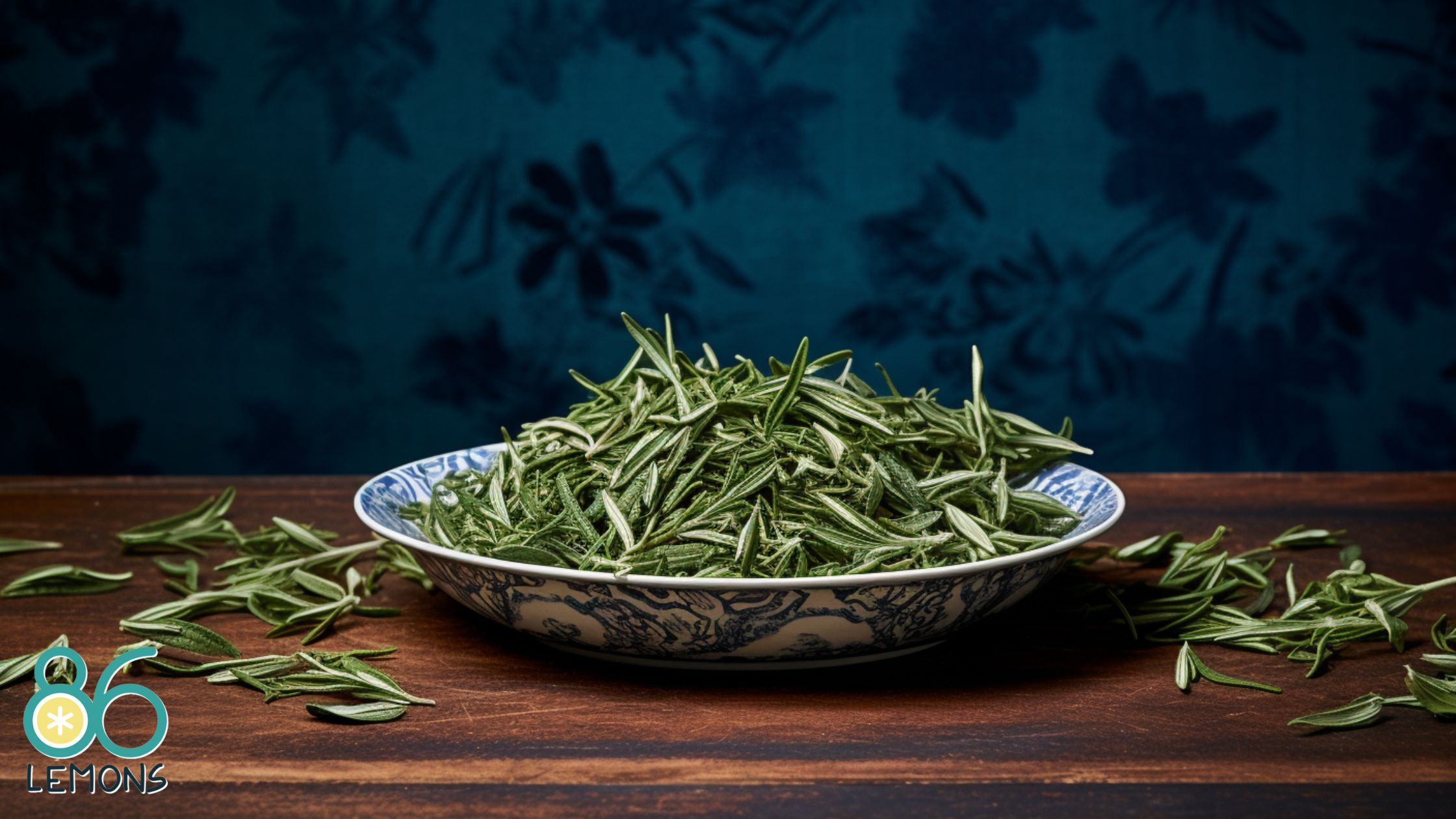Tarragon is a versatile herb that elevates the flavors of various dishes. Its unique taste makes it a sought-after ingredient in many recipes; however, there are instances when it’s hard to find or your dish calls for another herb.
No need to worry! I’ve compiled a list of the best substitutes for tarragon to help you in these situations. From basil to chervil and even dill, many alternatives can provide the flavors you want while keeping your desired dish’s essence.
Innovative ways to use these tarragon substitutes will also be beneficial. I’ll show you how to incorporate them effectively in different recipes, many of which you can find in these best easy vegan cookbooks.
Key Takeaways
- Tarragon substitutes are diverse, offering flavorful alternatives in various recipes.
- Incorporating the best substitutes ensures your dish maintains its desired essence.
- These substitutes’ health benefits and dietary considerations add value to your culinary creations.
Understanding Tarragon
Flavor Profile of Tarragon
I love tarragon for its distinct flavor profile! Tarragon has a unique licorice taste that’s slightly sweet with a hint of anise. It has a pleasant, somewhat mild aroma that sets it apart from other herbs.
When you catch a whiff of tarragon, you instantly think of French cuisine, as it’s often utilized in many French recipes. The flavor blends wonderfully with other ingredients, especially in sauces and soups.
Culinary Uses of Tarragon
Tarragon is a versatile herb that elevates the taste of numerous dishes. As a fan of French cuisine, I often use it in various recipes. Some of the best uses for tarragon include:
- Sauces: Be it tahini or creamy mushroom sauce, tarragon adds a delicate licorice flavor, making these sauces even more delicious.
- Soups: Adding tarragon to soups, particularly those with a vegetable base, imparts a subtle yet delightful licorice note.
Fresh vs. Dried Tarragon
When working with tarragon, I sometimes face the dilemma of using fresh or dried tarragon. They both have their pros and cons, so let me break it down for you:
| Fresh Tarragon | Dried Tarragon |
|---|---|
| Vibrant flavor | Milder flavor |
| Stronger aroma | Slightly less aromatic |
| Perishes quickly | Long shelf life |
| Great for sauces & soups | More suitable for long-cooking dishes |
Fresh tarragon has a more vibrant flavor and intense aroma, making it perfect for sauces and soups. However, it doesn’t last too long, so you need to use it while it’s fresh.
On the other hand, dried tarragon has a milder flavor and a bit less aromatic. It has the advantage of lasting longer and is excellent for slow-cooked dishes where the flavors meld over time.
So, now you better understand tarragon, its flavor profile, culinary uses, and the differences between fresh and dried variations. Feel confident to experiment with this fantastic herb in your dishes and let your taste buds enjoy the delightful licorice notes of this essential French herb!
Tarragon Substitutes Overview
Herbs Similar to Tarragon
I’ve always been a fan of tarragon’s unique licorice flavor, but I know it’s not always available or suitable for every dish. Fortunately, I’ve found some amazing herbs that can closely replicate the taste and excite words when tarragon isn’t an option. Here’s a list of the best substitutes I recommend:
- Fennel – Offers a mild licorice flavor that complements many dishes just like tarragon.
- Anise – Has a more pungent licorice taste, so use it sparingly and adjust according to your preference.
- Dill – Delivers a unique twist to dishes with a slightly different flavor profile but still reminiscent of tarragon.
- Marjoram – Gives a sweet, aromatic touch, which works wonderfully in sauces and marinades.
- Chervil – Provides a delicate anise aroma, suitable for lighter dishes like salads and seafood.
- Basil – Enhances dishes with its robust and sweet flavor and is adaptable to various recipes.
- Oregano – Embodies a spicy, earthy taste that can be a delightful substitute when used judiciously.
- Parsley – Offers a refreshing, clean flavor that can be combined with a pinch of thyme to mimic tarragon.
When to Substitute Tarragon
As much as I adore tarragon’s licorice taste, I have to admit that there are times when it might not be the best choice for certain dishes. For instance, when making béarnaise sauce—a classic French sauce made from a reduction of vinegar, wine, shallots, and tarragon—using fresh tarragon is paramount to achieve the authentic flavor.
However, substituting any of the herbs mentioned above can help you achieve a pleasantly similar flavor profile for dishes requiring a more subtle touch or where tarragon is unavailable.
I’ve also learned that experimenting with these herbs can lead to delightful discoveries, enhancing dishes with new and exciting flavors. Don’t hesitate to try to match your combinations to suit your tastes! Remember to keep the theme of licorice flavor in mind and use them wisely to complement your dishes, not overpower them.
Remember, whether you’re looking for a slightly different spin on a classic dish or working with what’s available in your pantry, these tarragon substitutes can provide excellent alternatives without compromising the flavor. Happy cooking!
Best Substitutes for Tarragon
Fennel: A Fragrant Choice
One of my favorite substitutes for tarragon is fennel! With its delicate, licorice-like aroma, fennel fronds make an excellent substitute. Fennel seed could also be used, but I prefer using the fronds for a lighter touch. I’ve found that fennel works well in recipes that call for a subtle hint of tarragon.
Anise: The Sweet Twin
Another excellent substitute for tarragon is anise. Aniseed, also known as anise seed, adds a sweet licorice flavor to dishes.
I often use it as a tarragon substitute because the anise flavor closely resembles tarragon’s unique taste. It pairs well with desserts and savory dishes, making it a versatile ingredient in my pantry.
Dill and Chervil: The Herb Cousins
I turn to dill and chervil when looking for a tarragon substitute with a similar herby quality. These two herbs are relatives of tarragon and have a mild, refreshing flavor.
I often mix them as a substitute, creating a well-rounded flavor profile that complements many dishes. Their green and feathery leaves also add an excellent visual appeal to my recipes!
Basil: The Italian Favorite
Who doesn’t love basil? This Mediterranean favorite is an excellent tarragon substitute, especially for a more robust, distinctive flavor.
Fresh basil leaves bring a sweet, peppery taste that works incredibly well in various recipes. I’ve found that it’s particularly delightful in tomato-based dishes and salads.
Marjoram and Oregano: Aromatic Alternatives
When I need a tarragon substitute, Marjoram and oregano are my go-to aromatic alternatives. These herbs have a mild, sweet flavor that’s reminiscent of tarragon.
While fresh varieties are ideal, I’ve also used dried marjoram and dried oregano with great success. They provide a lovely, fragrant touch to dishes, making them a fantastic choice when I’m looking to replace tarragon.
Other Exciting Alternatives
When I need to get creative with tarragon substitutes, I turn to herbs like rosemary, thyme, and mint for a deliciously different flavor profile. Each herb has unique characteristics, adding depth and interest to any dish.
I’ve even used a blend of these herbs and a touch of estragon to mimic the complex flavor of tarragon. With so many possibilities, it’s exciting to experiment and discover new combinations in my kitchen!
Innovative Ways to Use Tarragon Substitutes

As a cooking enthusiast, I’ve encountered situations where I’ve needed to find a suitable substitute for tarragon. Here are some innovative ways I’ve used tarragon substitutes in my recipes, from classic sauces to intriguing marinades and dressings to enhance meat and seafood dishes.
Substitutes in Classic Sauces
When it comes to classic sauces, one of the most well-known that calls for tarragon is the béarnaise sauce. If I don’t have tarragon on hand, I often replace it with chervil, which offers a mild flavor reminiscent of this essential herb.
Another excellent choice for bearnaises is a mix of parsley and a hint of cinnamon powder as a tarragon alternative.
Another sauce that often requires tarragon is aioli. I like experimenting with basil or marjoram for zestier mayonnaise to give it a subtle herbaceous twist. These choices also work well in creamy salad dressings and are perfect for all salads!
Reinventing Marinades and Dressings
When preparing marinades and dressings, the possibilities for innovation are endless. I like mixing it with tarragon substitutes to create unique vinaigrettes that pair perfectly with various dishes.
Consider using dill or fennel fronds instead of tarragon for refreshing, zesty dressings, such as this vegan Caprese salad. These substitutes go well with lemon juice, olive oil, and vinegar bases often found in marinades and sauces.
Another fun option is swapping tarragon with aniseed in your dressings; this delivers a bold flavor that enriches any salad.
Health Benefits and Dietary Considerations
Nutritional Value of Herbs
I’m thrilled to share some exciting facts about herbs used as substitutes for tarragon! Not only do these herbs add unique flavors to dishes, but they also come with several health benefits.
For instance, fennel fronds and dill are excellent antioxidant sources that help protect our bodies against cell damage. Additionally, herbs like basil and chervil contain essential nutrients, such as vitamins A and C, that boost our immunity.
Here are some common tarragon substitutes and their respective nutritional values:
| Herb | Protein | Calories | Fat |
|---|---|---|---|
| Dried Tarragon | 3.3g | 295 | 7.24g |
| Fennel Fronds | 1.24g | 31 | 0.2g |
| Chervil | 3.3g | 237 | 3.9g |
| Basil | 3.15g | 233 | 4.07g |
Allergy-Friendly Alternatives
Your specific allergy concerns as you look for tarragon substitutes are essential to me! Some herbs like dill and aniseed are rare allergens, making them great alternatives to tarragon if you’re seeking allergy-friendly options.
But, of course, it’s crucial to know your allergens and to consult a healthcare professional if you’re unsure.
Considering Dietary Restrictions
I understand the importance of considering dietary restrictions while searching for tarragon substitutes. The good news is that many herbs, including dried tarragon, fennel fronds, and chervil, are suitable for different preferences and restrictions, such as gluten-free, vegan, and low-calorie diets.
Remember, the key is knowing your specific dietary needs and choosing substitutes that provide the desired flavor and align with your health requirements!
Conclusion

I’m thrilled to share with you this round-up of great tarragon substitutes! As a key ingredient in many French and Mediterranean dishes, tarragon offers a distinctive flavor profile.
Sometimes, though, it can be hard to find at the grocery store, making tarragon alternatives highly sought after. My favorite substitutes include dried tarragon, fennel fronds, and chervil.
Each of these options offers unique flavors that can be used to replace tarragon without sacrificing taste. Fennel fronds work particularly well in recipes that call for the anise-like flavor of tarragon, while chervil has a delicate yet similar taste.
If you’re looking for even more options, try dill, oregano, marjoram, rosemary, and anise seed in a pinch! Each herb brings flair to a dish, and experimenting with different combinations can be fun.
There’s no need to fret if you can’t find fresh tarragon or want to cater to different tastes. With so many exciting tarragon substitutes, the possibilities for your culinary creations are virtually endless!
Just remember to adjust the amount you use based on the strength and flavor of your chosen replacement, and bon appétit!


